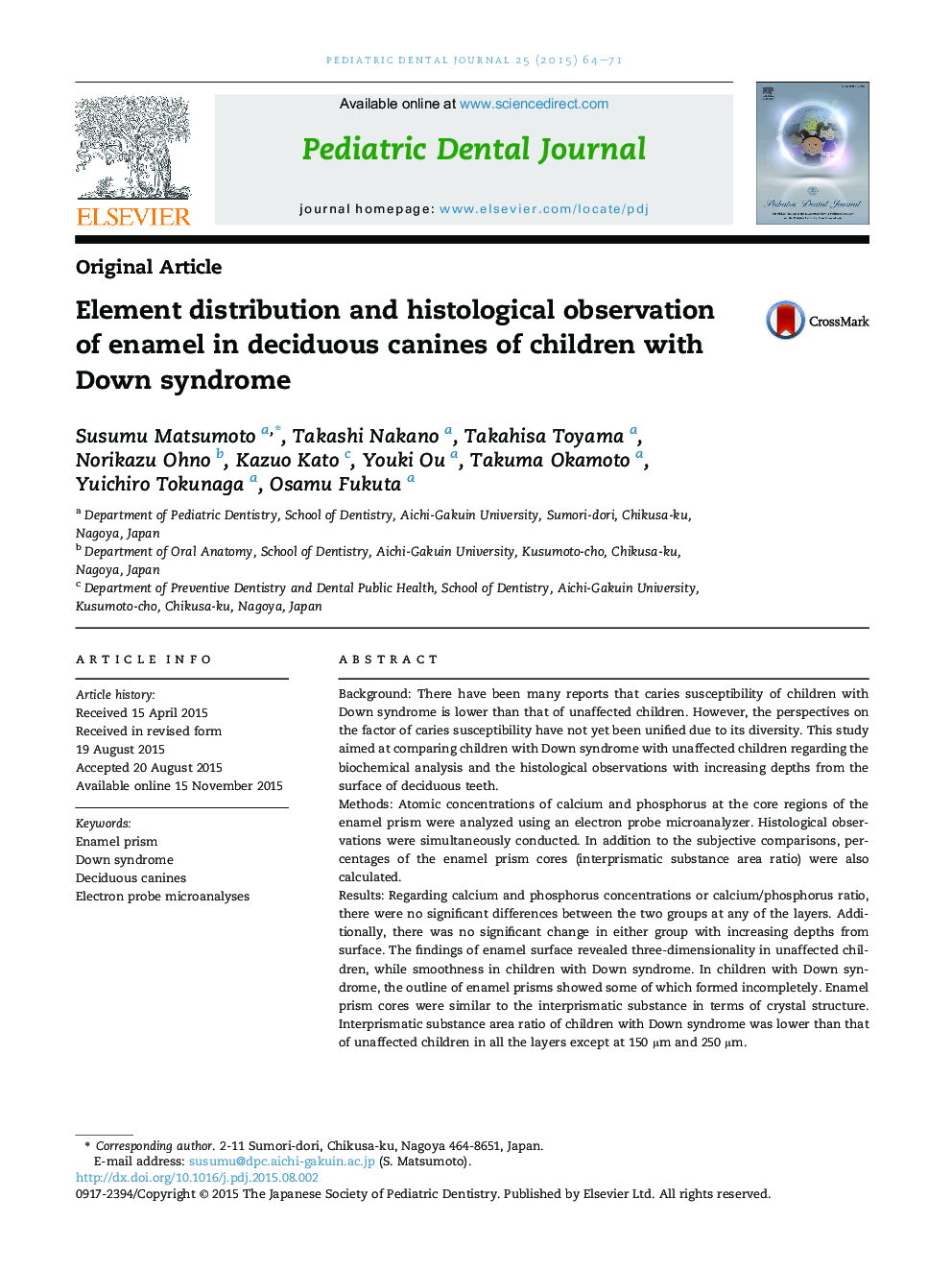| Article ID | Journal | Published Year | Pages | File Type |
|---|---|---|---|---|
| 3171513 | Pediatric Dental Journal | 2015 | 8 Pages |
Background: There have been many reports that caries susceptibility of children with Down syndrome is lower than that of unaffected children. However, the perspectives on the factor of caries susceptibility have not yet been unified due to its diversity. This study aimed at comparing children with Down syndrome with unaffected children regarding the biochemical analysis and the histological observations with increasing depths from the surface of deciduous teeth.Methods: Atomic concentrations of calcium and phosphorus at the core regions of the enamel prism were analyzed using an electron probe microanalyzer. Histological observations were simultaneously conducted. In addition to the subjective comparisons, percentages of the enamel prism cores (interprismatic substance area ratio) were also calculated.Results: Regarding calcium and phosphorus concentrations or calcium/phosphorus ratio, there were no significant differences between the two groups at any of the layers. Additionally, there was no significant change in either group with increasing depths from surface. The findings of enamel surface revealed three-dimensionality in unaffected children, while smoothness in children with Down syndrome. In children with Down syndrome, the outline of enamel prisms showed some of which formed incompletely. Enamel prism cores were similar to the interprismatic substance in terms of crystal structure. Interprismatic substance area ratio of children with Down syndrome was lower than that of unaffected children in all the layers except at 150 μm and 250 μm.Conclusion: In this study, the deciduous canine enamel of children with Down syndrome was thought to include more organic material than that of unaffected children.
